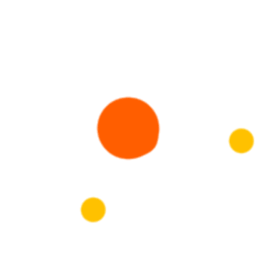I have been teaching children painting for fifteen years, and looking back on this journey, my heart is filled with insights. Every time I see children depicting the world and expressing emotions with their brushes, I deeply realize that painting is not just an art form; it is a language of the soul, a window to creativity and cognitive development. Today, I take this opportunity to share my thoughts over the years and leave a record for myself.
Visual art: The Oldest Language of Humankind
Since the dawn of humanity, painting has existed as one of the oldest and most natural forms of expression, predating the emergence of written language by thirty to fifty thousand years. In prehistoric caves, our ancestors used carvings and colors to narrate their understanding of the world. These primitive images were not only the embryonic form of art but also evidence of the evolution of thinking and creativity. In this sense, painting was the first language of human communication and the purest reflection of the mind.
This visual form of expression did more than help humans record experiences; it also shaped our way of perceiving the world. Painting is not just a movement of the hand—it is a profound mental activity that involves observation, analysis, integration, and creation. It carries emotions, bridges perception and reason, and serves as an instinctive way of exploring the world.
Children’s Painting: The Dual Growth of Mind and Thought
For children, painting is not merely a skill; it is a window to the mind, a vessel for emotions, and a key pathway to cognitive development. Through painting, children learn how to observe the world, express themselves, think critically, and solve problems with creativity.
As the philosopher John Locke stated in An Essay Concerning Human Understanding, “All knowledge derives from experience, especially sensory experience, with visual experience playing a crucial role.” Similarly, Immanuel Kant mentioned in Critique of Pure Reason, “Without sensibility, thought would be empty.” This means that sensory experiences, particularly visual experiences, are not only the foundation of art but also the cornerstone of cognition and knowledge formation.
Between the ages of 6 and 12, children undergo rapid development in observation, focus, and memory, and painting serves as an excellent tool to cultivate these abilities. Throughout their continuous practice, children not only learn to appreciate and create beauty but also unconsciously develop four key cognitive abilities:
- Observing reality and respecting truth—Painting trains children to observe attentively, teaching them to notice details and become keenly aware of the subtle changes in the world. By depicting shapes, colors, and light, they develop a deeper understanding of their environment.
- Understanding reality and analyzing facts—Painting is more than capturing appearances; it is also a way of understanding the essence of things, helping children develop logical thinking skills. They learn to compare different subjects, discover relationships, and grasp causality.
- Expressing reality and recording truth—Painting is a form of storytelling, allowing children to convey emotions and narrate their own stories through images. Each creation helps them organize their emotions and communicate through visual symbols.
- Creating new realities and innovating the world—Painting gives children the wings of imagination, encouraging them to break away from established frameworks and create their own worlds. They become explorers of the unknown, willing to think independently and push the boundaries of creativity.
Through these four stages of training, children develop a more refined and multidimensional way of thinking. They are no longer passive recipients of information but rather active explorers, analysts, and creators. They learn to think holistically rather than focusing only on fragmented details. This mode of thinking not only benefits them in the arts but also prepares them to tackle challenges across various academic and professional fields in the future.
The Comprehensive Benefits of Painting for Children
Painting is more than just part of an artistic education; it is a vital tool for shaping well-rounded personalities. Children who study painting tend to be more patient, focused, honest, and responsible. When faced with problems, they are more willing to explore deeply, seeking a balance between truth and beauty.
Painting cultivates a unique way of observing the world, a method of transforming chaos into order, and a lifelong pursuit of beauty and truth. It enhances not only creativity and artistic appreciation but also helps children develop a broader, more multidimensional approach to learning in other disciplines.
Today, I welcome another group of young students. As they step into the studio, their eyes filled with curiosity and excitement, I realize that painting is not merely about teaching them a skill—it is about opening a door to a broader world. Every stroke of color they lay down is a step toward exploring the world. Every attempt they make is a courageous reach toward the unknown.
I hope that in the future, they will use their brushes to paint their dreams and, on the canvas of life, boldly create colors that belong to them.
This is my understanding of children and painting.









Add comment